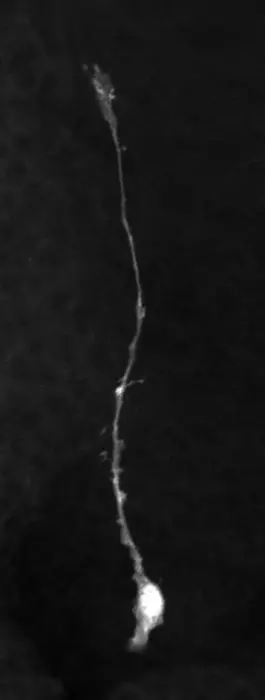The process of birth is one of the most crucial transitions in an organism’s life. The shift from the sterile environment of the womb to the complexities of the external world triggers an array of physiological, metabolic, and neurological changes that are vital for survival and development. Recent research conducted by a prominent team of scientists led by Kazunobu Sawamoto from Nagoya City University sheds light on the transformative role birth plays in the maintenance and regulation of neural stem cells (NSCs). Their findings offer groundbreaking insights into the biological functions of NSCs, particularly in the context of postnatal neurogenesis.
Neural stem cells, which reside primarily in the ventricular-subventricular zone (V-SVZ) of the adult mammalian brain, are pivotal for ongoing neurogenesis—the production of new neurons throughout an organism’s life. Despite being a core component of brain plasticity and functionality, understanding how NSCs are regulated during the critical period around birth has remained elusive. Sawamoto’s group focused on the metabolic dynamics that occur during and after birth, particularly in radial glia (RG), which are recognized as the embryonic NSCs. This investigation aims to unravel the complex interrelationship between metabolic shifts during birth and NSC quiescence and activation.
The research utilized advanced techniques such as metabolomics and single-cell RNA sequencing to gauge the metabolic states of RG in both full-term and preterm mice. The results revealed a significant finding: normal term birth instigates a metabolic reconfiguration in RG that leads them into a quiescent state. This silencing is heavily influenced by alterations in glutamine metabolism, with a notable increase in the expression of Glul—a gene that encodes the enzyme responsible for converting glutamate into glutamine.
However, the study found alarming implications for preterm births. In instances where birth occurred prematurely, the metabolic alterations essential for quiescence were markedly impaired. This discovery sheds light on the profound biochemical processes that govern NSC functionality and underscores the precarious balance that regulates stem cell behavior in the early stages of life.
Sawamoto articulated the significance of these findings, emphasizing the necessity to further investigate the repercussions of preterm birth on postnatal neurogenesis. This exploration is critical, as it could elucidate potential strategies to mitigate adverse neurodevelopmental outcomes frequently observed in preterm infants. The research drew correlations between the neurogenic activity in RG and preterm birth, highlighting that RG tends to enter a transient neurogenic state through mTORC1 signaling when born prematurely. Such a state, while appearing to generate new neurons, ultimately led to a depletion of the overall NSC pool—a phenomenon that could detrimentally affect long-term neurogenesis.
Examining beyond murine models, the researchers extended their investigation to human autopsy brains. They established that the decremented postnatal neurogenesis in the V-SVZ was consistent across both species. This finding emphasizes the potential implications of preterm birth on human brain development and cognitive abilities, raising concerns about how metabolic disturbances at birth could lead to significant neurodevelopment challenges later in life.
In conclusion, the research team’s analysis encompassed more than just the mechanistic aspects of postnatal NSCs. The intricate examination of how metabolic shifts at the time of birth influence the fate and functionality of NSCs opens vast avenues for future research. For instance, investigating the therapeutic potential for regulating glutamine metabolism might yield strategies to support NSC maintenance and boost neurogenic capacity in preterm infants.
This body of work culminated in robust evidence typifying the necessity of birth for NSC maintenance. The implications extend into the realm of regenerative medicine, as understanding these foundational biological processes can lead to targeted interventions aimed at improving the health and functionality of neural tissues following injury or developmental disruptions.
The full article detailing their findings was published in the esteemed journal Science Advances, and it stands as a vital contribution to our understanding of neurogenesis and the intricate relationship between birth and stem cell biology. These insights not only advance the scientific community’s comprehension of neural dynamics but also pose imperative questions regarding the implications of birth conditions on long-term neurological health.
The collaborative effort involved expertise from a spectrum of institutions, underscoring a united approach to unravel such complex biological phenomena. By bridging insights from different fields of research, this study propels forward our understanding of the brain’s development and the potential therapeutic avenues we may explore to support individuals affected by the consequences of premature birth.
In summary, the examination of neural stem cell dynamics vis-à-vis the birth process posits a fresh perspective on neurodevelopment. Future research will undoubtedly build on these findings, potentially revolutionizing our approach to understanding and treating neurodevelopmental disorders associated with premature birth.
Subject of Research: Neural Stem Cells and Birth
Article Title: Significance of birth in the maintenance of quiescent neural stem cells
News Publication Date: 22-Jan-2025
Web References: N/A
References: N/A
Image Credits: © Nagoya City University Graduate School of Medical Sciences
Keywords: Neural Stem Cells, Birth, Quiescence, Neurogenesis, Radial Glia, Glutamine Metabolism, Preterm Birth, mTORC1 Signaling.
Tags: BirthGlutamine MetabolismMetabolic ReconfigurationmTORC1 SignalingNeural Stem CellsNeurodevelopmental DisordersPostnatal NeurogenesisPreterm birthQuiescenceRadial GliaRegenerative MedicineSingle-Cell RNA Sequencing





